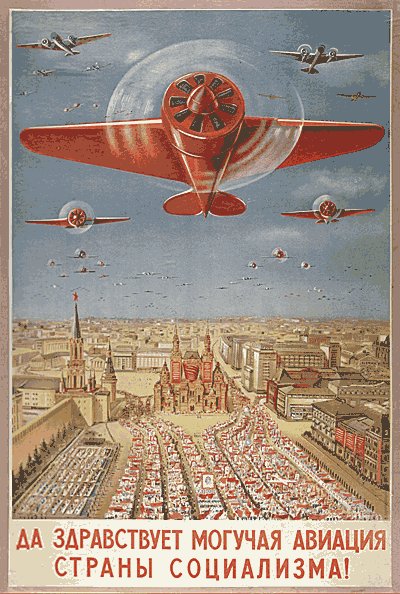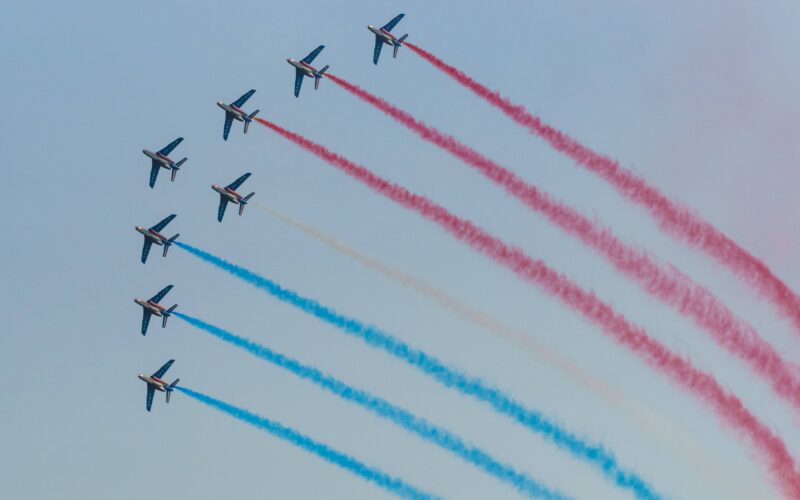Air display teams are a common sight in many celebrations. From aviation air shows to military parades and even diplomatic visits, soaring military jets displaying their nations’ colors always create a spectacle. But how did they come to be? And why do air forces continue to maintain them?
Almost as old as military aviation
Fighter pilots showed phenomenal skill in the dogfights of the First World War, during which they employed their creativity in an effort to surprise the enemy. The German ace Max Immelmann gave his name to a maneuver, the Immelmann Turn, still used within aerobatics. But aerobatics did not really find ground as entertainment until the 1920s.
By the 1930s, several air forces created air display teams. They were both a way for the armed forces to showcase the skills of their pilots, and for manufacturers to demonstrate the capabilities of their new aircraft.
In the United States, the first display team appeared as early as 1927 as the ‘Three Musketeers’. It was composed of three pilots from the Army Air Corps, the ancestor of the United States Air Force, flying on Boeing PW-9 fighters. After a series of tragic crashes, which resulted in the deaths of the three original pilots, the team was disbanded less than a year after its creation.
In France, three army instructors created the ‘Patrouille d’Étampes’. From 1931 to 1937, the team flying on Morane-Saulnier MS.225s, would represent France in the early international air shows. They would progressively be joined by more pilots, becoming a team of five in 1935, and 10 in 1937. That formation would later become the Patrouille de France.
In 1939, Jérome Cavalli, one of those early aerobatics enthusiasts whose exploits earned him several punishments from his superior officers, described his discipline as follows: “Aerobatics, by facing all the cases of flight, by exploiting all the conditions even bad ones, gives to those who practice it a sense of the air and the possibilities of the plane that no other pilot, however experienced he may be, will ever acquire.”
In Russia, military pilots also pushed the limits of their aircraft. Pyotr Nesterov was slated as one of the first pilots to have managed to fly a loop during a demonstration in Kyiv, Ukraine, on September 9, 1913.
This discipline survived the October Revolution. In 1934, upon presenting the maneuvering qualities of the Polikarpov I-16 fighter to Joseph Stalin, it was decided that an aerobatic team composed of five aircraft would be created to perform flypasts above the Red Square during national celebrations. Known as the Red Five, they would participate in various parades until the beginning of the Second World War.

(Dobrovolsky V.N./ Wikimedia)
The golden era of air display teams
Progressively, the air forces of many nations – Italy, Belgium, the United Kingdom… – developed their own air display team.
When the Second World War erupted in Europe, many aerobatic pilots used skills accumulated in air displays to elaborate new fighting doctrines.
In return, once the war was over, during air shows veterans displayed the considerable experience they acquired flying close patrol or very low altitude combat missions. The discipline could count on both the new aircraft and the experienced pilots that warfare had generated.
The jet era brought a new dimension to air display. The speed allowed for larger spaces to be covered in faster maneuvers. Aircraft were equipped with smoke bombs to render their trajectories, usually in the color of their nations. The advent of airborne radios also offered better coordination between the different teammates. But faster aircraft also mean greater danger. Thus, from that moment, aerial demonstrations in teams are mostly choreographed and leave no room for improvisation.
This golden age saw air display teams multiply, with the British Royal Air Force maintaining as many as five teams at a time, each representing a different flying training school. One of these teams, the Black Arrows, still holds the record for the greatest number of aircraft in the same loop. At the Farnborough Airshow of 1958, 22 Hawker Hunters were presented in formation.
Unfortunately, the budgetary restrictions of the post-Cold War era meant that several of these great teams were disbanded. But the turn of the millennium saw many small civilian teams appear around the world, flying on light propeller planes that are easier to maintain. Some, like the Latvian Baltic Bees, even soar on Aero L-39 Albatros jets.
Today, the martial tradition of aerobatics endures. Many air forces still maintain their own air display team to act as flying ambassadors of their nations in the countries that they visit.
A formation of Hunters (Adrian Pingstone / Wikimedia)

